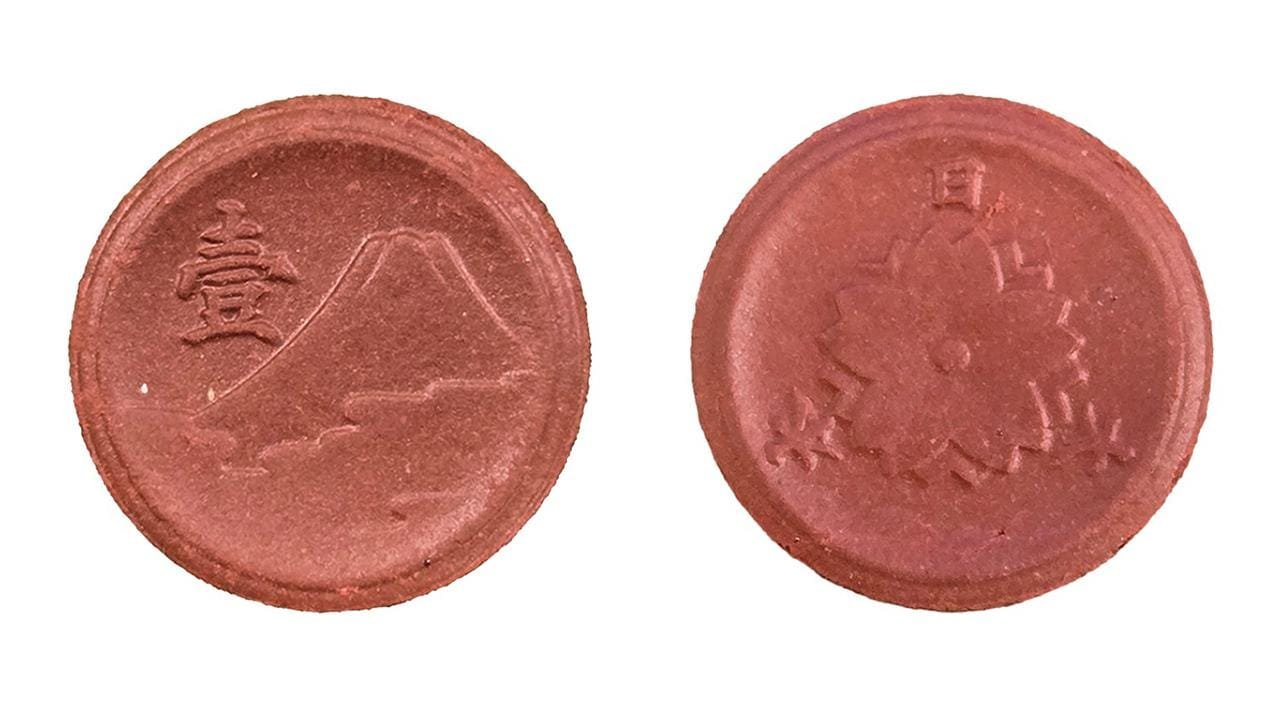In a rare discovery, Shofu Inc., a Kyoto-based ceramics company, uncovered approximately 500,000 rare “Maboroshi” or “phantom” ceramic coins from World War II. These coins, produced in response to metal shortages, were found in August 2023, and stashed in 15 wooden boxes at Shofu’s former factory, which once crafted such coins during the war. The Japan Mint Bureau has since acquired these artifacts, marking a significant addition to Japan’s historical coin collection.
 WWII phantom ceramic coins found in Kyoto. Credit: Japan Mint
WWII phantom ceramic coins found in Kyoto. Credit: Japan Mint
Manufactured in wartime by companies like Shofu Kogyo Co. Ltd. in Kyoto, Seto, and Arita, the coins provided a crucial subsтιтute for standard metal currency. During WWII, metal was reallocated for munitions production, prompting the Japanese government to commission ceramic coins to sustain internal trade. About 15 million of these ceramic coins were produced, though most were destroyed after Japan’s surrender. As a result, the 1-sen coins—each 15 millimeters in diameter and featuring Mount Fuji on one side and cherry blossoms on the other—became known as “phantom” coins.
Shofu employees stumbled upon these coins among other ceramic items stored in the warehouse. “There are unexpected things in unexpected places,” said a representative from Shofu, expressing surprise at finding such a large stash of these forgotten relics. Shofu had originally manufactured porcelain teeth and was one of three firms designated to produce ceramic coins under the Mint’s authorization.
Upon their rediscovery, the coins were officially transferred to the Japan Mint in Osaka’s Kita Ward. In a formal ceremony, Japan Mint Chairman Kenji Goto presented a letter of appreciation to Shofu’s president, Takami Tetsuo, acknowledging the company’s dedication in preserving this historical cache. As a token of graтιтude, the Mint also gifted Shofu a commemorative display containing 100 ceramic coins.
 The 1-sen coins—each 15 millimeters in diameter and featuring Mount Fuji on one side and cherry blossoms on the other—became known as “phantom” coins. Credit: Japan Mint
The 1-sen coins—each 15 millimeters in diameter and featuring Mount Fuji on one side and cherry blossoms on the other—became known as “phantom” coins. Credit: Japan Mint
The Japan Mint has announced plans to carefully study the coins, comparing them with historical records from its archives to better understand the wartime manufacturing process. According to the Mint, they aim to “carry out a detailed examination, comparing them with materials preserved in the Mint’s collection. We hope this will provide greater insight into the manufacturing conditions of the period.”
The Mint Museum intends to display these ceramic coins at its main location and at its Saitama and Hiroshima branches.
More information: Japan Mint





